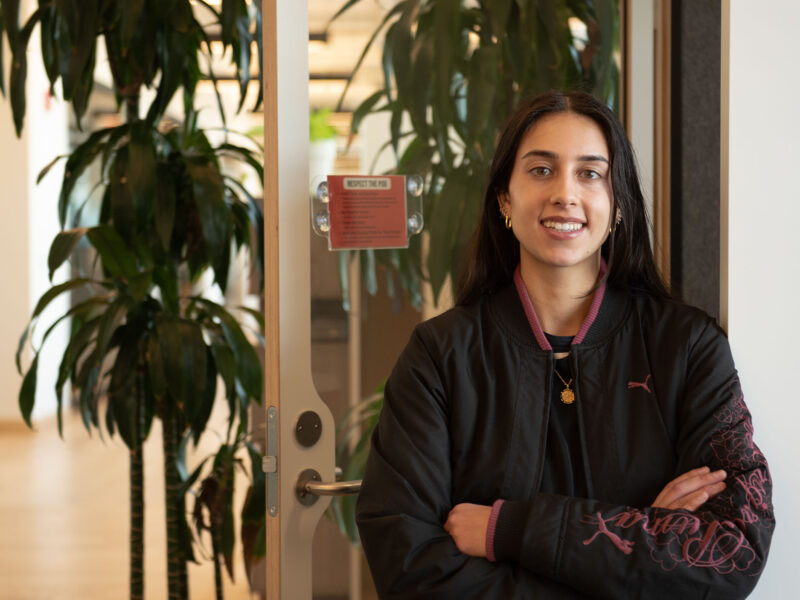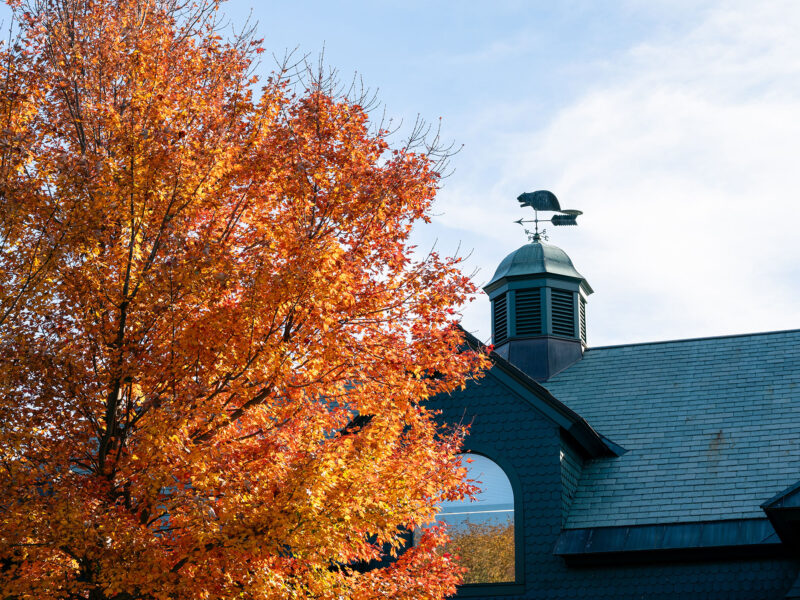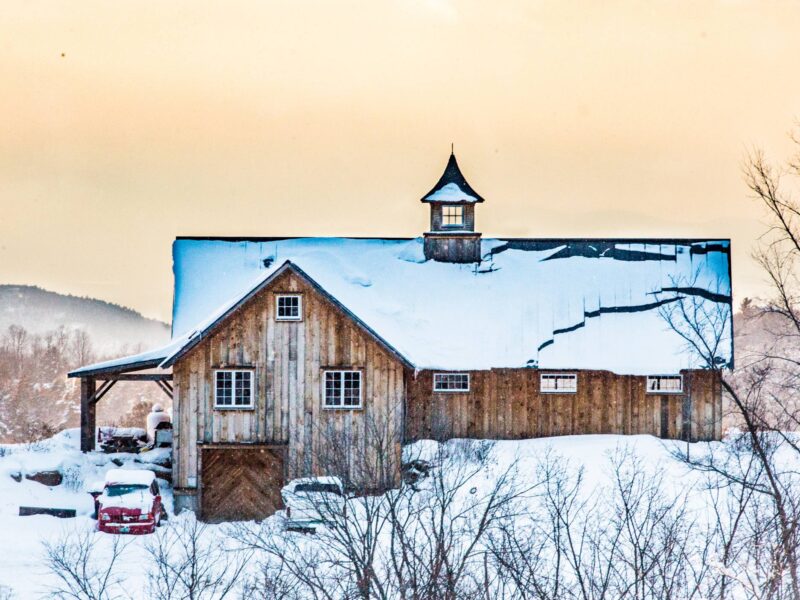Blast From the Past: Champlain’s Storied Academic Buildings
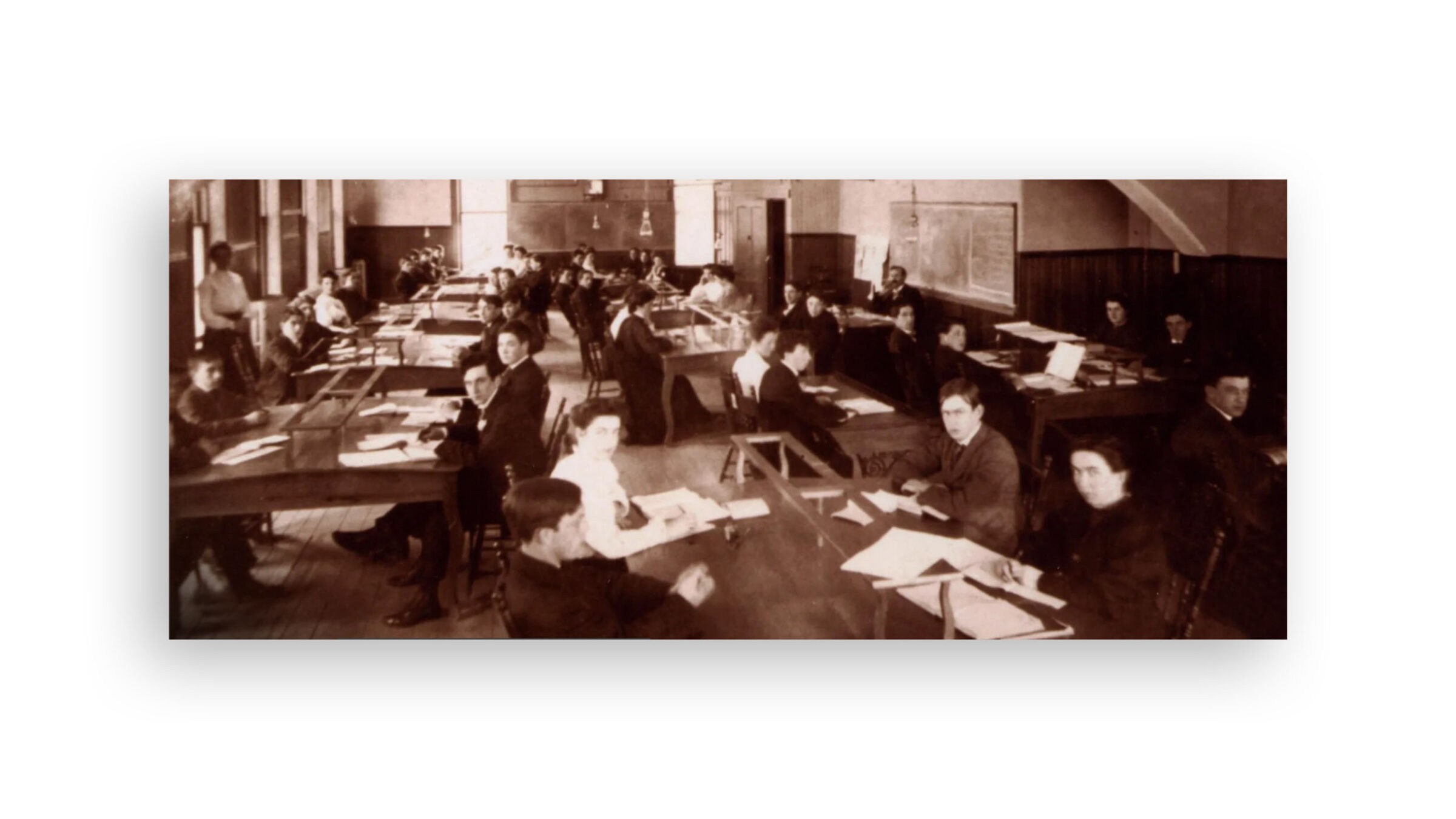
When you think of Champlain College, you might picture Lake Champlain and the Adirondack Mountains in the distance, or maybe our 75,000-square-foot Center for Communication & Creative Media. But what about the historic buildings that make up the foundation of our campus? Take a look at some familiar campus features back in their heyday!
Freeman Hall
Did you know that Champlain’s current location isn’t its original spot? It was only in 1958 that then-president C. Bader Brouilette bought Freeman Hall and moved the College from Main Street to South Willard Street. He named it for his wife, Marjorie Freeman Brouilette, who was also treasurer of Champlain at the time. Brouilette bought the building from the University of Vermont (UVM)—which used it as a women’s residence hall—and completed extensive renovations to accommodate Champlain’s growing student body.
Freeman Hall was built in 1903 as a carriage barn on the property of Clarence Morgan, who lived in the house that is now Cushing Hall. The building underwent renovations in 1961 and 1964 to add additions with more classroom space, a student lounge, and library space. In 1970, the Joyce Learning Center was built adjoining Freeman on the southwest side of the building to add even more classroom space.
In 1989, Freeman again underwent renovations, removing the wings and transforming it into the three-floor building that you see today. Freeman underwent its most recent construction in 2011, when the third floor offices of the President and Provost were reconfigured into open office suites. Today, Freeman Hall houses the offices for the Division of Education & Human Studies, classroom space, and the offices of Interim President Laurie Quinn, Acting Provost Catherine Morgan, and Academic Affairs!
Aiken Hall
You may recognize this picture as Aiken Hall—the awesome-looking brick building right next to the Miller Information Commons. It was the main house of what eventually became the Westervelt Estate, built around 1885 in the American Queen Anne style by A. B. Fisher for Frederick Kennedy and his family. Stephen Jocelyn bought the home in 1902 and renovated the house to include a library. His daughter Dorothy married William Westervelt, giving the estate its familiar name once it passed to the couple.
Champlain bought the estate in 1982 from Dorothy Westervelt’s daughter, Jane. The main house was named after Lola Aiken, a former Trustee of the College, and the old carriage house was named Wick Hall after former Vermont senator Hilton Wick and converted to classroom space. Additionally, the library was redecorated and named the Morgan Room in honor of Eunice Silsby Morgan, and is used today for presentations and events. Aiken was used as a residence hall until 2008, when it was renovated to give Core professors office space. It even won Champlain College its first LEED Gold Certification for green buildings in 2009.
Fun fact: Aiken Hall was the first house on Summit Street to have a telephone, which was installed when the Kennedys lived there!
Skiff Hall
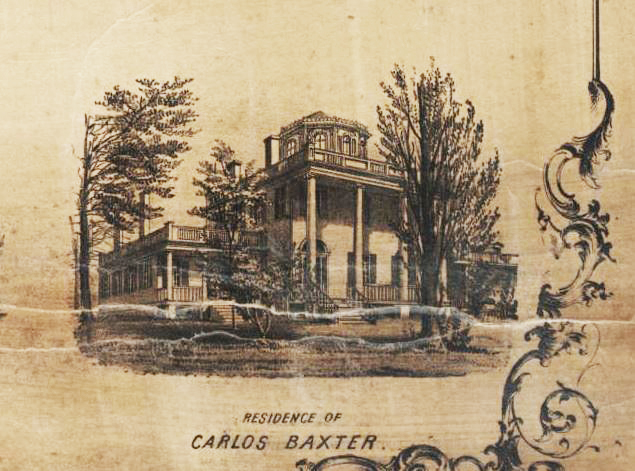
Curious about Champlain’s oldest building, Skiff Hall? It’s known locally as the main house of the old Winterbotham estate, built around 1830 in the then-popular Federal style by Joseph Potwin. Soon after it was built, it was sold to the attorney Don Carlos Baxter and his family who lived there from 1833–1867. They built The Gallery to be a law office around 1845. Joseph Winterbotham bought the house from the Austin family, the owners from 1867–1927. He decorated The Gallery with his impressive art collection–including works by Van Gogh, Degas, and Cezanne. The Burlington School Department purchased the estate in 1956, and some of Winterbotham’s art collection was given to UVM’s Fleming Museum. Champlain acquired the estate in 1980 to use as administrative offices. When Dr. Robert Skiff, Champlain’s fifth president, retired in 1992, it was renamed Skiff Hall. Currently, Skiff Hall is home to the Women’s & Gender Center (Champlain’s inclusive space for students to learn and talk about gender, sexual identity, empowerment, and leadership), the Offices of International Education and Residential Life, Center for Service & Sustainability, and Counseling Center.
How about one last piece of trivia? Skiff Hall was added to the National Register of Historic Places in 1975 and is one of the oldest-surviving buildings in Burlington!
Coolidge House
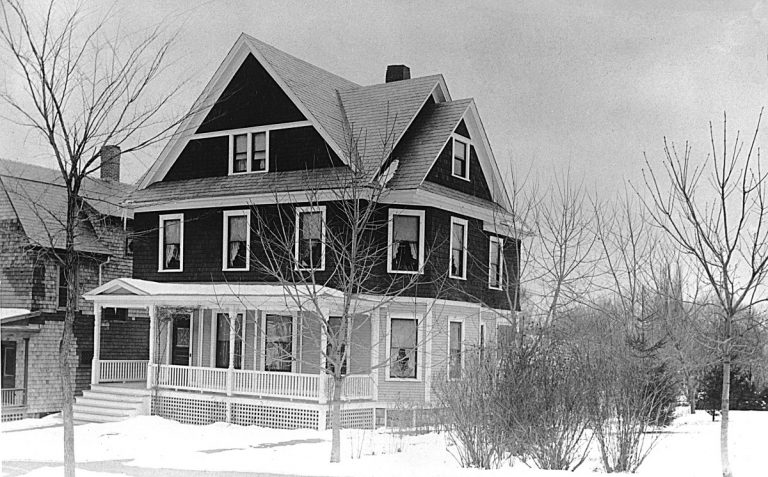
A few houses down Maple Street from the intersection at S. Willard Street is Coolidge House. Built in 1899, this Colonial Revival, shingle-style house was constructed as the new home of Andrew Goodhue and his family. His daughter, Grace, founded the Vermont chapter of the Pi Beta Phi fraternity for women while a student at UVM, using the attic as a meeting space. On October 4, 1905, Grace Goodhue married Calvin Coolidge, 30th President of the United States (1923–29), in the parlor. Acquired by Champlain in 1988, it was renamed Coolidge House and subsequently restored in 1993.
Want to see these incredible historic buildings for yourself? Why not come visit and explore the campus?
Author
More Inside The View
Ideas
From the minds of our students, faculty, and alumni.
News
The latest from Champlain College.
People
Champlain is more than just a place; it's a community.
Places
On campus, in Burlington, and beyond.
Events
Check out our many campus events and get involved! Refine your search by using the filters or monthly view options.


